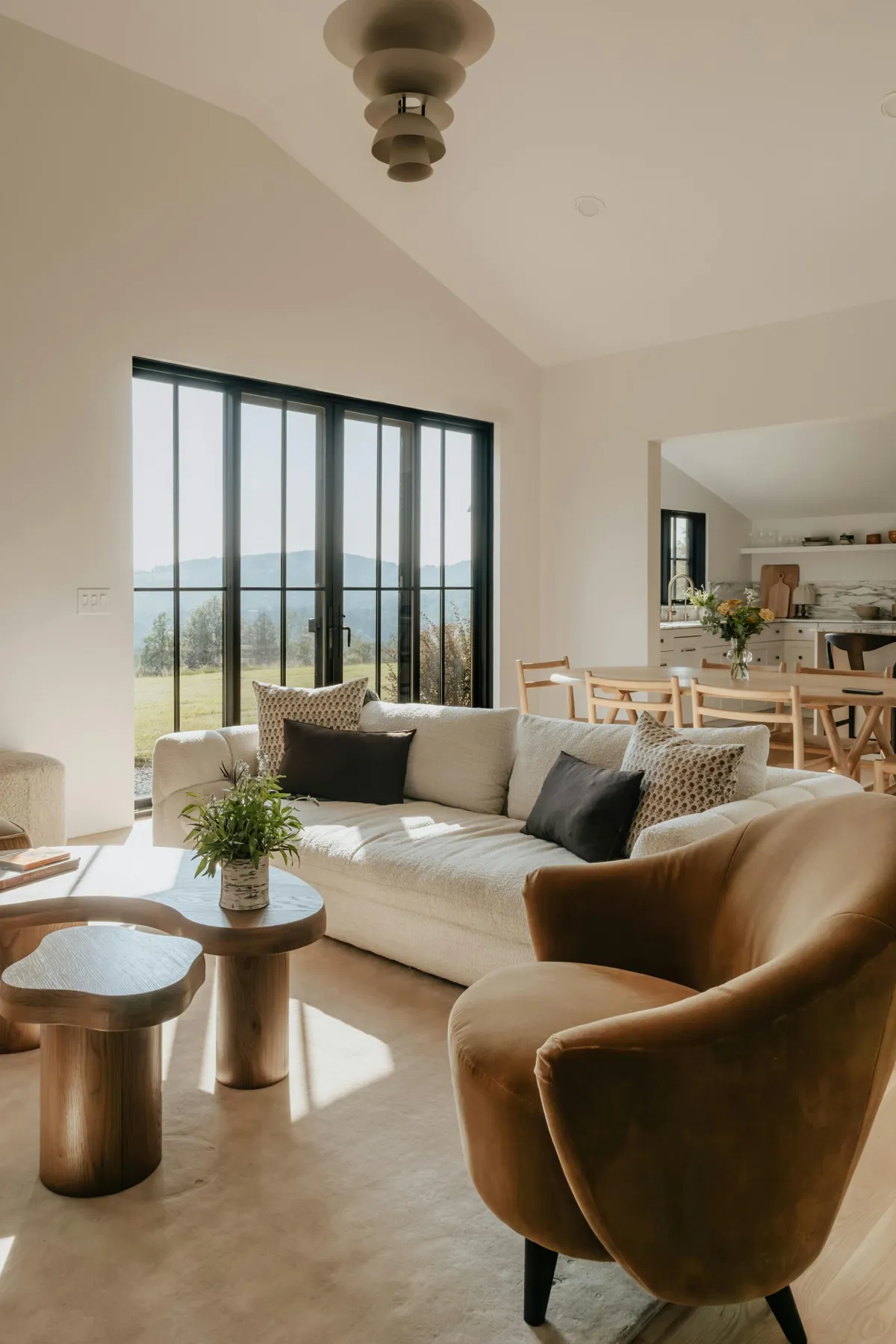
Design Your Dream Home with Unique Custom Styles
Designing a custom home offers the freedom to express your personality, lifestyle, and values through architecture. From sleek modern layouts to warm rustic retreats, today’s homes blend aesthetics with functionality like never before. With so many options, homeowners can now create living spaces that reflect both creativity and practicality. Unique features, sustainable practices, and smart technologies are now central to home design. Custom Builder Connection (CBC) helps bring these ideas to life by connecting you with trusted architects, designers, and builders. Whether you’re seeking space-saving layouts or eco-friendly upgrades, CBC simplifies the journey to your dream home.
Key Takeaways
Modern, rustic, minimalist, and sustainable designs remain the most popular custom home styles.
CBC helps homeowners personalize layouts to match lifestyle needs and design preferences.
Smart home features and green building materials improve comfort, efficiency, and value.
Multi-functional rooms and creative storage maximize space, especially in urban homes.
What Are the Most Popular Unique House Design Styles for Custom Homes?

Today’s design trends offer a variety of styles that reflect diverse tastes and lifestyles. Many homeowners favor a combination of modern and contemporary elements, using clean lines and large windows for a spacious, light-filled environment. Others prefer rustic and farmhouse designs that highlight natural materials and cozy aesthetics. Minimalist and Scandinavian styles offer simplicity and practicality, particularly useful in urban living. Eco-friendly homes, meanwhile, focus on sustainability through material choices and energy efficiency, catering to long-term comfort and values.
How Do Modern and Contemporary Designs Stand Out?
Modern and contemporary homes feature sleek layouts with minimal decor and neutral tones, enhancing both visual appeal and functionality. These designs often include large windows, open floor plans, and clean lines that invite natural light and extend the interior outdoors. Polished materials like glass, metal, and concrete are used for durability and modern flair. Smart technologies are seamlessly integrated for convenience. The overall layout emphasizes openness and efficient space use. These homes are ideal for those seeking a clutter-free, elegant aesthetic. They reflect a preference for innovation and sustainability in both design and lifestyle.
What Makes Rustic and Farmhouse Styles Unique?
Rustic and farmhouse designs focus on authentic materials such as reclaimed wood and stone, giving each space a warm, lived-in feeling. These styles are known for their inviting textures, natural tones, and elements that emphasize tradition and comfort. Design features like exposed beams and fireplaces provide character and history. Sliding barn doors and porches contribute to a connection with nature. These homes combine nostalgic charm with modern-day livability. The focus remains on building homes that are both enduring and welcoming. The layout usually encourages communal living and relaxed spaces.
How Can You Personalize Your Custom Dream Home Design?

Creating a personalized custom home means incorporating elements that reflect your daily routines, lifestyle, and preferences. Whether it's a dedicated office space, an open-concept living area, or unique lighting features, your choices should serve both function and personal expression. Interior layouts can be adjusted to match family needs or individual work-from-home setups. Bespoke furniture and custom cabinetry enhance usability while adding visual interest. Smart home systems allow customization of lighting, temperature, and ambiance. Collaborating with design professionals ensures your vision is translated effectively. The result is a home that’s truly tailored to how you live.
What Are Effective Ways to Tailor Designs to Your Lifestyle?
To tailor your home effectively, start by analyzing your daily activities and how you use each room. A well-equipped kitchen might suit those who love to cook, while flexible spaces work best for evolving needs. Material selections should reflect both your aesthetic and functional preferences. Smart features like adjustable lighting and convertible furniture enhance versatility. Including built-in storage helps maintain cleanliness without sacrificing style. Personal décor like artwork and heirlooms can make spaces more meaningful. Planning with future changes in mind ensures long-term comfort. This approach creates a home that evolves with your life.
How Do You Incorporate Unique Architectural Features?
Unique architectural features elevate a home’s design and express individuality. Dramatic elements such as floating staircases or cantilevered sections can double as focal points. Custom windows, angled ceilings, and distinct rooflines offer visual intrigue and improve light flow. These features are often developed during the design phase using 3D renderings. They allow clients to see how bold ideas fit into the overall plan. Incorporating standout elements requires collaboration with creative professionals. These features enhance both the functionality and personality of a home. With thoughtful planning, they become lasting hallmarks of the property.
Which Interior Design Ideas Complement Unique House Exteriors?
A seamless connection between interior and exterior design creates a cohesive living experience. Clean exterior lines should be echoed inside with open spaces, minimalist layouts, and complementary colors. Neutral tones inside provide a backdrop for architectural details to shine. Large windows on the outside translate into bright, airy interiors. Bespoke furnishings and signature lighting fixtures add layers of detail. Spaces should flow naturally, mirroring the home's outward appearance. Carefully chosen textures and finishes tie both environments together. This harmony enhances the home's character and elevates the entire experience.
What Are Innovative Ideas for Maximizing Space in Custom Homes?

Modern custom home designs often prioritize space efficiency, especially in compact or urban settings. Open floor plans eliminate unnecessary barriers, making interiors feel larger and more connected. Built-in cabinetry, lofts, and hidden storage help use every inch wisely without compromising aesthetics. Multi-functional furniture adapts rooms for various uses throughout the day. Flexible layouts encourage rooms to serve dual purposes. Outdoor extensions such as decks or patios increase usable space. Vertical solutions like mezzanines add dimension while preserving openness. These strategies balance beauty with practicality for everyday living.
How Do Open Floor Plans Create Spacious Living Areas?
Open floor plans remove physical barriers between key living areas, allowing for greater interaction and visual flow. By combining the kitchen, dining, and living spaces, the home feels more expansive and adaptable. Natural light can travel freely across open spaces, reducing reliance on artificial lighting. These layouts also provide flexibility in furnishing and decorating. Built-in features and smart storage help keep things tidy. The design encourages casual gathering and movement. It also allows homeowners to customize how each area is used. The result is a welcoming, functional living environment.
What Are Creative Storage Solutions for Small Spaces?
Smart storage is essential in maximizing functionality without clutter. Built-in shelving, under-stair compartments, and recessed cabinets optimize underused zones. Multipurpose furniture—like ottomans with storage or beds with drawers—adds convenience. Sliding doors and foldaway desks help save space while maintaining usability. Vertical storage, including wall-mounted units, makes full use of height. Customized cabinetry can be tailored to fit odd corners. Hidden closets or concealed compartments maintain a clean aesthetic. These approaches allow small spaces to stay organized and stylish. Thoughtful design ensures storage remains both accessible and invisible.
How Do Sustainable Materials and Practices Influence Unique House Designs?

Sustainability shapes not only how homes look but also how they perform over time. Using eco-conscious materials like reclaimed wood, recycled steel, and low-emission products ensures durability with minimal environmental impact. Designs often prioritize energy-efficient systems, smart layouts, and passive climate control. Local sourcing reduces transportation emissions and supports regional economies. Water-saving features like rainwater harvesting and efficient plumbing are common. Green design also enhances resale value through lower maintenance and utility costs. This approach results in homes that are both visually appealing and environmentally responsible.
What Are the Best Eco-Friendly Building Materials for Custom Homes?
The best eco-friendly materials offer a balance of sustainability, function, and style. Reclaimed wood adds character and reduces waste, while bamboo offers a renewable alternative to hardwood. Recycled steel strengthens the structure while cutting down on emissions from manufacturing. Low-VOC paints improve air quality indoors, supporting healthier living environments. Recycled insulation materials help maintain energy efficiency year-round. These choices support long-term cost savings through durability and low maintenance. Selecting environmentally friendly materials reflects a mindful design philosophy. It also contributes to the overall value and comfort of the home.
How Can Energy Efficiency Be Integrated Into Design Plans?
Energy efficiency begins with a smart layout that promotes natural heating, cooling, and lighting. High-performance insulation and strategic window placement reduce reliance on mechanical systems. Glazing systems and thermal envelopes protect against heat loss or gain. Renewable options like solar panels and geothermal heating offer clean, long-term power solutions. Smart thermostats and automated climate systems ensure optimal performance daily. Lighting can be enhanced with daylight sensors and energy-saving fixtures. Efficient planning creates a home that’s comfortable, low-cost, and environmentally aware. These systems work together to improve sustainability across the board.
What Are the Key Steps in Planning and Executing Your Unique Custom Home Design?

Bringing a custom home to life involves a clear, structured process. It starts with consultation sessions that define your goals, style, and functional needs. Next comes conceptual design, using 3D modeling to explore layouts and space planning. Detailed architectural plans follow, ensuring structural accuracy and compliance with local requirements. A project manager oversees timelines, communication, and execution. Material and finish selections align with your preferences and sustainability goals. Each step involves collaboration with professionals to align vision with feasibility. This organized approach minimizes stress and ensures results. It transforms ideas into a personalized, functional home.
How Do Initial Consultations Shape Your Dream Home Vision?
Initial consultations lay the groundwork for a personalized home design. They provide a platform to explore lifestyle habits, must-haves, and long-term goals. This phase encourages detailed discussions around layout preferences, budget, and aesthetic direction. Professionals use this information to develop a project brief. The brief guides all design and construction decisions going forward. Early collaboration also helps identify potential challenges. It ensures clarity and alignment among all parties involved. This foundational step reduces miscommunication and supports a smooth workflow throughout the build.
How Are Detailed Architectural Plans Developed for Custom Homes?
Architectural plans turn the conceptual vision into precise building instructions. They include structural layouts, electrical maps, window placements, and plumbing configurations. Engineers and architects collaborate to ensure stability, efficiency, and code compliance. These documents serve as the official reference during construction. Careful attention is paid to dimensions, finishes, and integration of systems. Plans are reviewed and revised based on design input and permitting guidelines. The clarity of these plans minimizes construction delays or errors. They are essential for both the construction team and client confidence.
What Role Does Project Management Play in Building Your Dream Home?
Project management ensures that your home is built on time, on budget, and to specification. A project manager coordinates between contractors, designers, and vendors. They monitor schedules, track expenses, and troubleshoot issues as they arise. Regular site updates and clear communication help maintain transparency. Having a dedicated professional in charge reduces missteps and confusion. This role is key in keeping everything organized. It allows you to focus on decision-making without getting overwhelmed. The result is a smoother and more enjoyable experience from start to finish.
Frequently Asked Questions
What design styles can Custom Builder Connection (CBC) help me explore?
Custom Builder Connection (CBC) can connect you with builders, designers, and architects who specialize in a wide range of styles—modern, contemporary, rustic, farmhouse, minimalist, and eco-friendly. Whether you want sleek glass walls and open spaces or reclaimed wood and natural textures, CBC helps tailor your vision with the right professionals.
Can CBC help me integrate smart home technology into my custom design?
Yes, CBC can connect you with designers and builders who specialize in smart home integrations. From automated lighting and security systems to climate control and energy-saving tech, CBC ensures these features are considered from the design phase through final execution.
Does CBC offer support with sustainable and eco-friendly home design?
Absolutely. Custom Builder Connection (CBC) facilitates eco-conscious designs by connecting you with experts who use sustainable materials like recycled steel, bamboo flooring, and low-VOC finishes. They also guide you in planning for solar panels, rainwater harvesting, and energy-efficient layouts.
Can CBC help me plan and visualize my custom home before construction begins?
Yes. CBC offers access to professionals who provide 3D modeling and conceptual design services. This lets you preview layouts, natural lighting, and space functionality before the building phase begins—ensuring alignment with your vision.
Conclusion
Choosing the right design for your custom home involves more than aesthetics—it’s about crafting a space that fits your lifestyle and future goals. With evolving trends in sustainability, space efficiency, and smart technology, homeowners today have more ways to personalize than ever. Custom Builder Connection (CBC) makes the process easier by connecting you with experienced professionals who align with your vision. From initial planning to material selection and project management, CBC ensures each step is informed and stress-free. No matter the design style you favor, your dream home is achievable with the right guidance. Trust CBC to help you build smart, beautifully, and uniquely.


